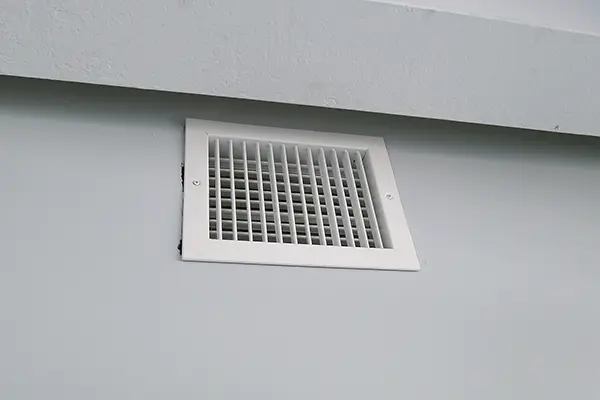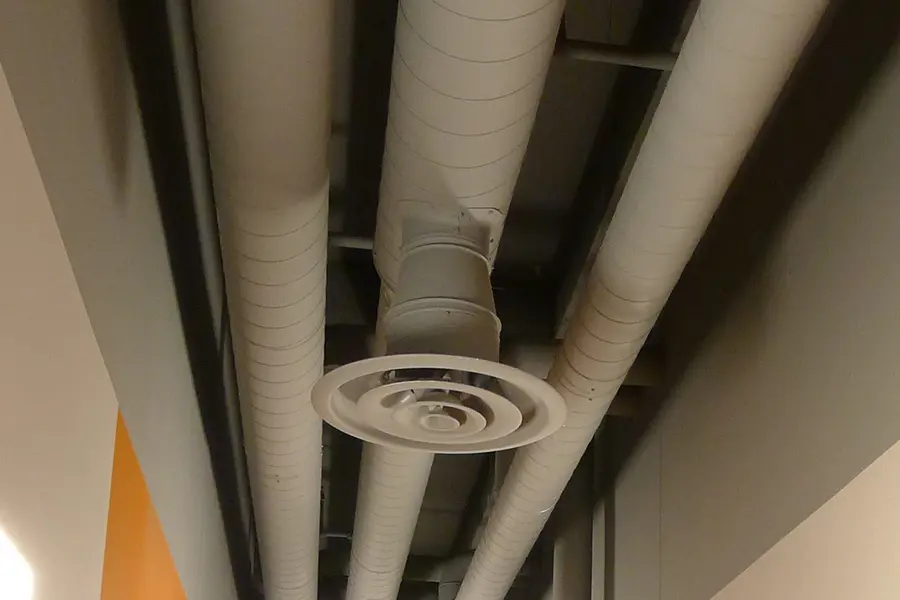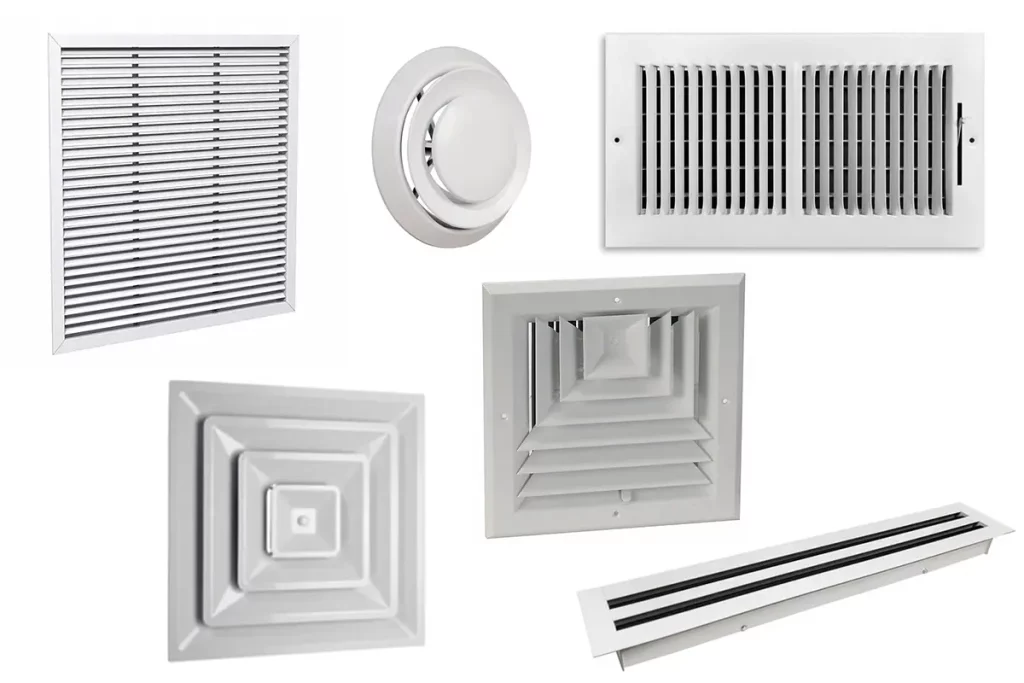You’ve just received an email from the contractor, and they mentioned something about “RGDs.” Not sure what that means? The following article will explain it to you.
RGD stands for Registers, Diffusers, and Grilles. These components are critical parts of the HVAC system that allow for air movement in or out of spaces and ductwork.
You may read that and say, “aren’t those all the same”? It’s not uncommon to see those terms used interchangeably, but the fact is that they are all similar but play specific roles in construction.
What’s the difference between registers, grilles, and diffusers?
RGDs are all a form of vent that allows the movement of air to pass through it. Below is an explanation of each.
Grilles
Grilles are a type of screen or grating that covers an opening and allows air to move through but also keeps people and pests out. It also serves as a visual barrier between occupants and the inside of the ductwork. They are typically fixed and are used for return air. Return air refers to the air pulled from a space to be filtered and reconditioned (heated or cooled) through the HVAC equipment and moved back into the room. Return air is the air that’s returning to the mechanical unit. Often times, air filters are installed to remove particulates from the air prior to returning to the unit.
Grilles can also be located in doors or walls to transfer air from one space to another. You may have seen a grille in a door before. This is often because the space behind the door is being exhausted (as in a janitor’s closet) and the grille allows air from outside to pass through.

Registers
Registers are similar to grilles but have the added functionality of being able to control the air flow; either by slowing it down or redirecting it. This is achieved by the use of dampers, which can be adjusted or shut. Registers are typically used to supply conditioned air.

Diffusers
Diffusers are also used to supply conditioned air but are more specifically designed to direct air flow (diffuse it, as the name implies). Diffusers are often used to spread the supply air 360 degrees, but can also be chosen to supply air in a specific direction (180 degrees, 90 degrees, etc.) Diffusers are typically fixed, so they are selected based on their location in a room to achieve the desired air distribution.


Where you’re likely to see the term RGDs
If you’re working in the architectural field, here are situations where you’re likely to see the term RGDs used.
In conversation with the mechanical engineer
You made need to discuss sizes or shapes of registers or grilles since they have an aesthetic affect on a space. You may need to discuss the type of diffusers needed based on the ceiling construction (ACT ceiling vs a drywall ceiling for example).
In submittals during construction
As the architect or designer, we often need to verify sizes, colors, and materials of the RGDs. It’s generally up the the mechanical engineer to verify everything else (adequate air flow, etc.).
In discussion with other designers or the client about aesthetics
Architectural louvers and grills can significantly impact how a space looks or feels. Alignments, size, color, etc., all play a role. Sizes matter as well – a linear diffuser that’s only a few inches wide can be less obtrusive than a rectangular one. Likewise, a “nozzle” style diffuser gives a much different appearance than a rectangular register.
How is a louver different than a RGD?
Louvers are similar in that they are vents and allow air movement through, but are typically located on the exterior of a building. The louvers’ blades are designed to keep the weather, and often views, out. They are usually installed with insect or bird screens behind the blades to keep unwanted pests out.
What is a damper?
A damper is a mechanism, typically a plate, that regulates the volume of air passing through a duct or register. They are also used in fireplaces to control airflow (draft) through a chimney.




